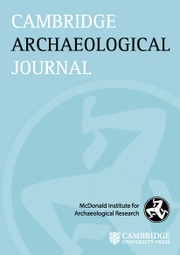Article contents
Pollution Concepts and Marriage for the Southern African Iron Age
Published online by Cambridge University Press: 05 June 2013
Abstract
This article draws on the ethnography of South African Bantu speakers to model an archaeologically useful relationship between pollution beliefs and marriage. Typically, pollution beliefs intensify with more complex marital alliances, first with the increasing significance of relations between wives and their cattle-linked siblings, and then with a shift towards a preference for cousin marriage. The article applies the model to the Early Iron Age (ad 650–1050) record and concludes that Early Iron Age agriculturists practised non-kin marriage, but that a high bridewealth, and possibly hypogamous marriage, generated considerable structural tension in Early Iron Age society.
- Type
- Articles
- Information
- Copyright
- Copyright © The McDonald Institute for Archaeological Research 2013
- 5
- Cited by


